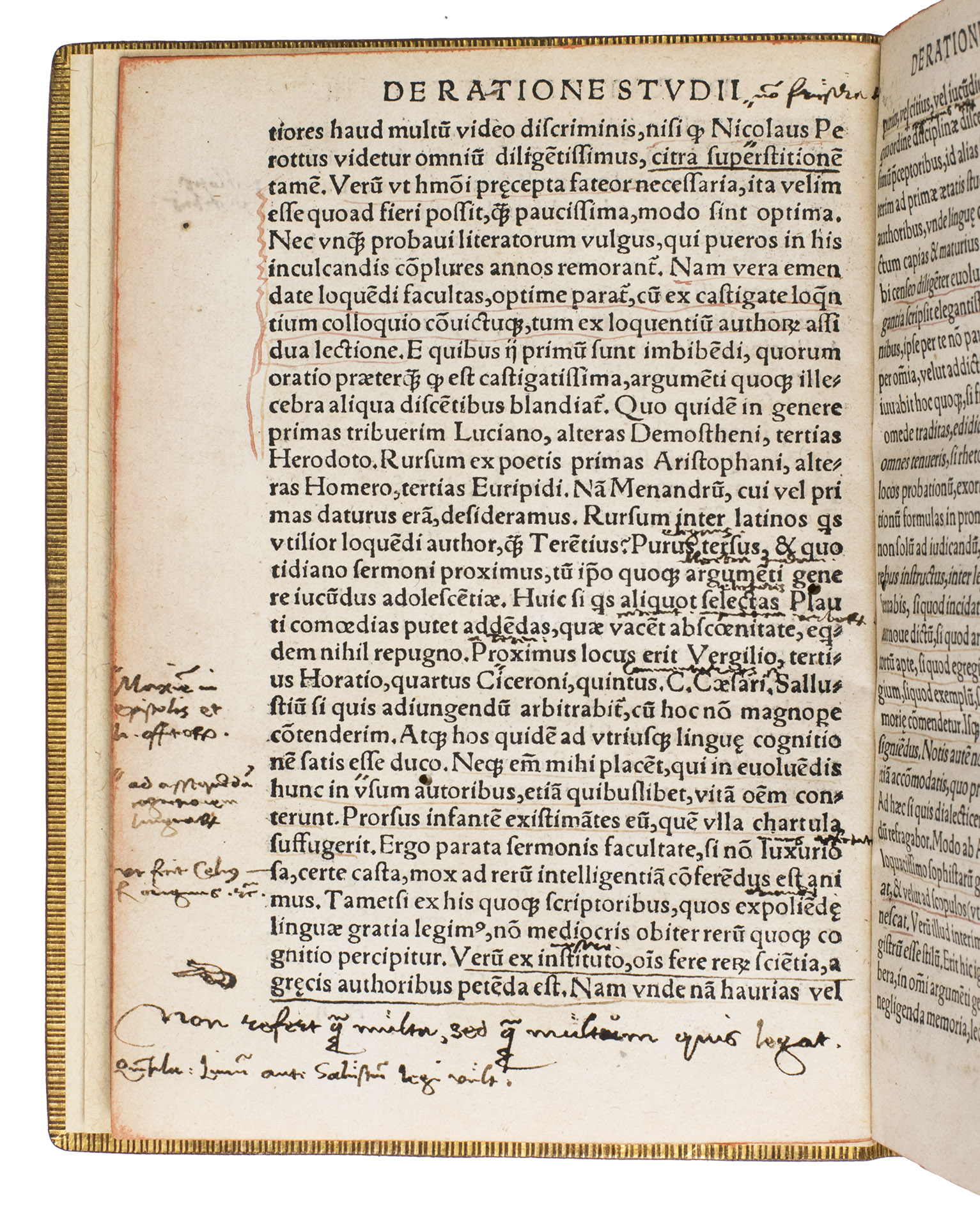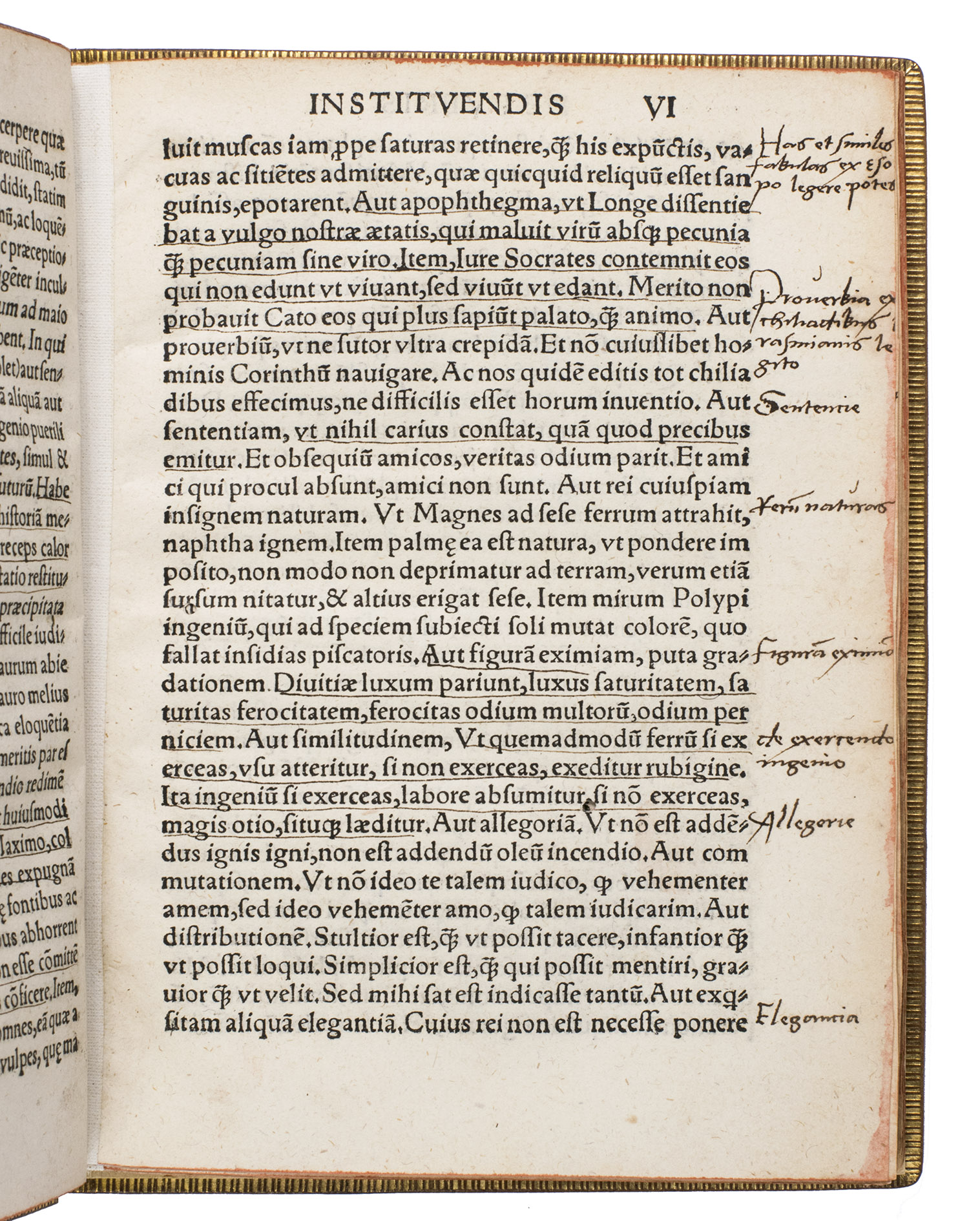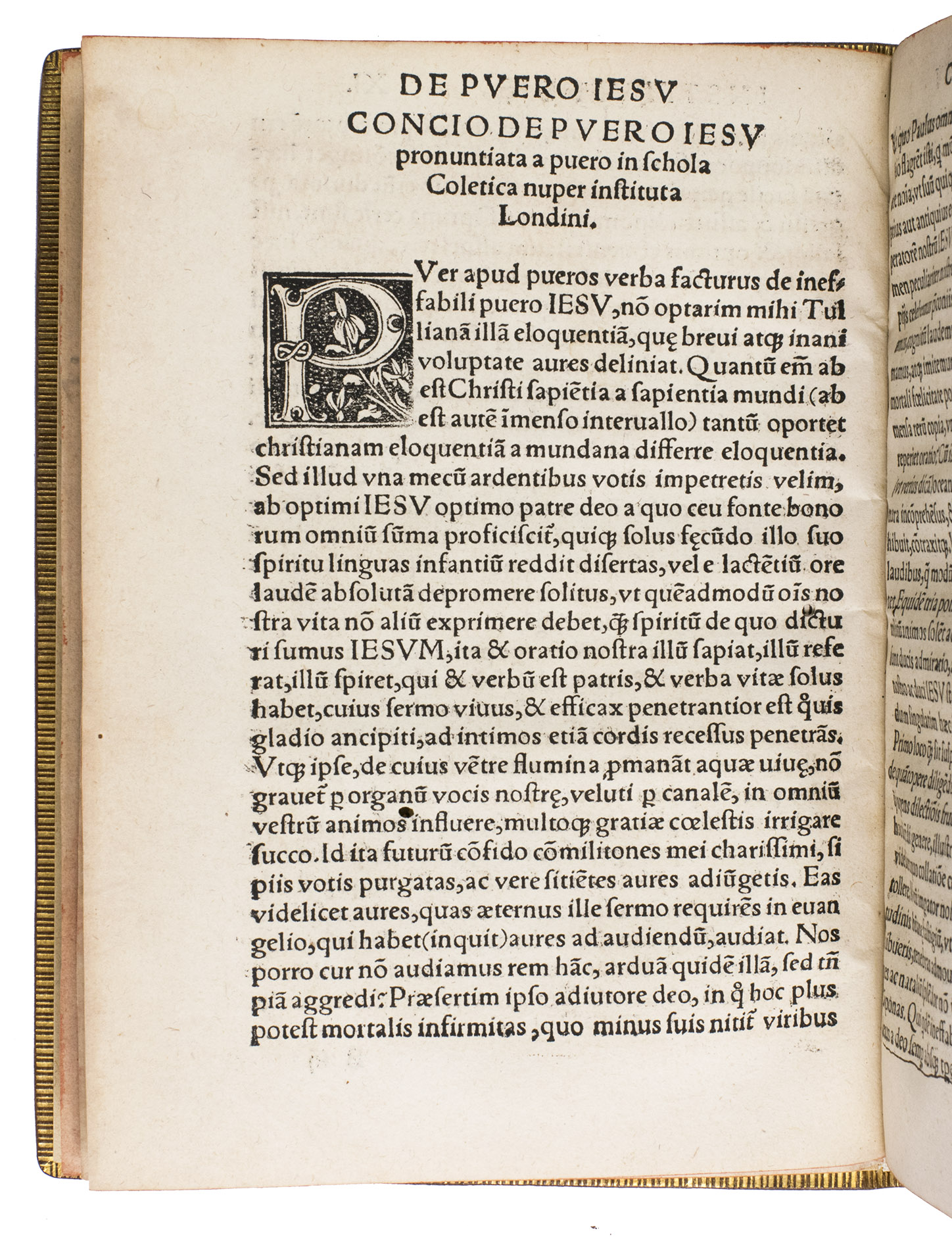ERASMUS, Desiderius.
De ratione studii, ac legendi interpretandique auctores libellus aureus. Officiu[m] discipulorum ex Quintiliano. Qui primo legendi, ex eodem. Erasmi concio de puero Iesu in schola coletica Londini instituta p[ro]nu[n]cia[n]da. Eiusdem expostulatio Iesu ad mortales. Eiusdem carmina scholaria.
(Colophon) Strasbourg, Matthias Schürer, April 1516. 4to. With a woodcut decorated title frame and 3 woodcut decorated initials. Modern brown pigskin. XXIII, [1 blank] ll.
€ 7,500
Early edition of Erasmus seminal educational treatise De ratione studii, here presented alongside several other influential pedagogical and devotional texts. It further includes: Officium discipulorum ex Quintiliano (The duties of students according to Quintilian), including a section on the first stages of learning to read, also derived from Quintilian, a sermon on the child Jesus by Erasmus, intended for delivery at the Colet School in London, a lament of Jesus addressed to mankind, and a collection of school poems.
The opening dedication, addressed to Peter Viterius, a professor of liberal arts, sets the tone for this work: Erasmus praises his friends discernment and judgment in matters of education, using vivid comparisons drawn from military strategy and classical mythology to underscore the importance of order and method in learning. Without it, he argues, even the most gifted minds may falter.
Of particular note is Erasmus endorsement of an instructional technique that became central to Renaissance humanist pedagogy: the use of structured annotation. In De ratione studii, he recommends that students classify selected passages under thematic headings, a mnemonic device that aids both retention and retrieval. This principle would go on to shape the methods of early modern teaching and note-taking. It also reflects Erasmus' broader educational reforms, where rhetoric and moral philosophy intersect. His engagement with progymnasmata (preliminary rhetorical exercises), especially those of Aphthonius, favoured for their clear organisation into theory and examples, demonstrates his commitment to practical and accessible instruction for young learners.
With some contemporary (and later?) underlining' and annotations in red and brown ink, mainly consisting of corrections, additions to the text, and markings of significant passages. Two minor worm holes througout, barely affecting the text. The gutters between, leaves V-VI; VII-VIII; XX-XXI; and after leaf XXIII have been reinforced in the gutter with linen tape, slightly browned throughout. Otherwise in good condition. Adams E 346; Bezzel 1709; USTC 653250 (9 copies); Vander Haeghen I, 169; VD16 E 3534; not in BM STC German; De Reuck; Kossmann.
Related Subjects:







